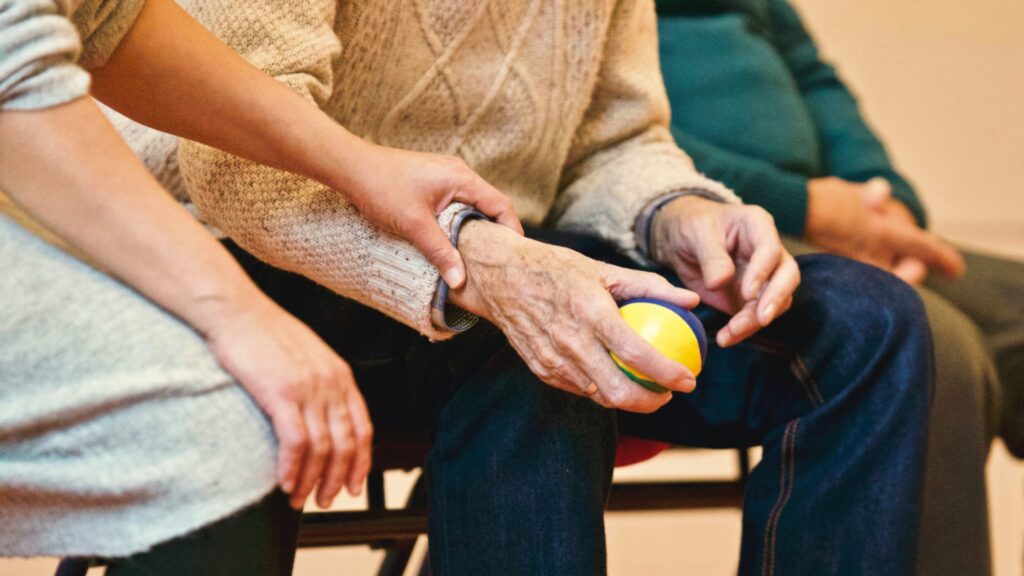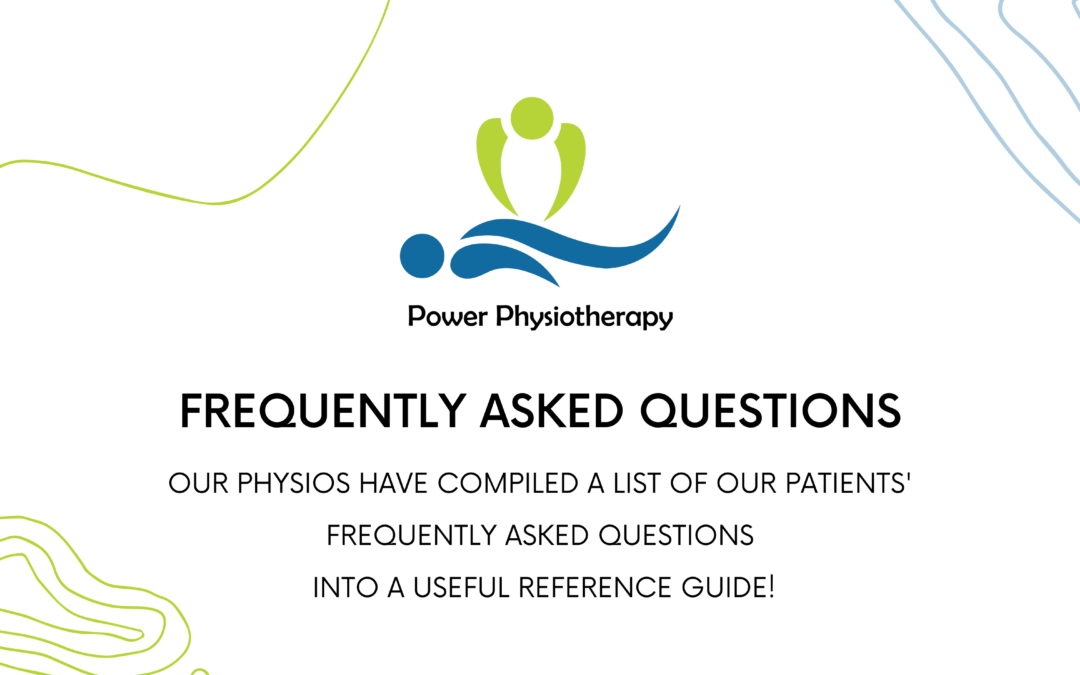Our Physios have compiled a list of patients’ Frequently Asked Questions into a useful reference guide!
When do I start physio?
We recommend that you start physio as soon as possible after your injury.
The sooner you start treatment, the faster you will get better.
Our aim is to make you more comfortable quickly by providing relief of pain and swelling as well as restore your movement and function.
Will I be sore after my physio session?
It’s normal to experience some degree of treatment soreness after your physiotherapy session, however this may not always happen.
Don’t be alarmed if this happens, however it’s vital that you provide feedback to your physiotherapist so they can modify your future sessions.
When do I use ice?
Ice should be used in the first 24 to 48 hours after an injury.
It can continue to be used if the painful area feels hot,
looks red or is swollen
It is safe to use ice past 48 hours as a method of pain relief.
Always wrap the ice pack in a cloth to protect the skin.
Application of ice should not exceed 20 minutes and may be used every couple of hours.
When do I use heat?
Heat can be used as a method of pain relief but not in the presence of redness or swelling of the painful area.
If no specific injury has occurred eg: woke up with a stiff back or ‘slept funny’ then heat can be used straight away.
However, if an injury has occurred and you have an ‘ouch’ moment, then refer back to ice.
Take precautions to protect the skin from heat burns.
Should I take medication?
Always check with your doctor or pharmacist for specific instructions on medication for pain relief before commencing.
However, if you have safely taken painkillers or anti-inflammatories in the past, your physio may discuss the best way to take medication.
Note that anti-inflammatories should not be commenced in the first 48 hours after a muscle tear or ligament sprain.
For best effect, medications should be taken as per prescription or as directed by your doctor.

Should I use any creams?
There are many creams on the market which help people in different ways and therefore this is a personal preference.
However, if you choose to use Voltaren for swelling and pain relief, we recommend that it is used 3 times per day for a maximum of 5 days then stop use. Recommence after another 5-day break.
Always be mindful of ceasing use of creams if any skin irritation occurs.
I don’t feel like I’m getting any better, what should I do?
It’s important to discuss your concerns with your Physiotherapist. However please remember complex conditions or conditions that you have had for a long time will take longer to improve and are unlikely to change substantially early on in treatment.
What should I do if I can’t stick to the recommended treatment plan?
We understand that everyone’s circumstances are different, so please discuss your concerns with your Physiotherapist so an alternative plan can be made; we love collaborating with you to find the best solution!
How many treatments will I need?
This will depend on the severity of your problem as well as the length of time that you have had it. Your Physiotherapist will discuss this with you in your treatment plan. Please remember ‘quick fixes’ are not always possible nor helpful for resolving conditions.
Will I be given exercises to do?
We will definitely incorporate exercise therapy as part of your recovery plan. However you may not be prescribed exercises in your first session as we need to monitor your initial response to treatment. Exercises that are specific to you will be prescribed in a graduated way and progressed as seen fit by your Physiotherapist.
If I have back pain, how long should I sit for?
Prolonged sitting can be an aggravating trigger for back pain. We recommend a maximum of 30 to 40 minutes of sitting time. After that it is advisable that you take a break from sitting, move around and perform any exercises prescribed to you. Your physio may discuss chairs or lumbar support to assist with pain management.

What is good posture?
“Your next posture is your best posture”
Our bodies are designed to move so keep it moving and try avoiding sitting or standing for long periods of time. If your work requires you to sit for longer periods, consider a lumbar support to help maintain your natural spinal curves.
Is it safe to go for a walk after my physio session?
Walking is a great way of easing into exercise as part of your recovery process. The amount of appropriate walking will depend on the injury and how painful it is. Your physiotherapist will recommend what is suitable for you.
Will the physio help me return to sport or exercise?
Yes. Physiotherapists are trained in guiding you back into sport or exercise after injury. Your physiotherapist will provide you with specific strengthening and stretching exercises relevant to your sport to ensure you return safely and to minimise risk of re-injury.

How long will it take for me to get better?
Muscles, tendons, ligaments and joints all have different healing timeframes. Your physiotherapist will be able to assess your injury and give you an expected timeline for recovery. Generally speaking, if you have had your pain for a longer period of time, it may take longer to resolve.
Do I need a scan?
A scan is not required to attend physiotherapy, however once you have been assessed by your physio they may recommend further investigations or scans in order to rule out more serious conditions or structural issues.
A scan result may not always match your symptoms.
What if I can’t see my usual physiotherapist at Power Physio?
If you are struggling with pain we advise you not to wait! Our Physiotherapists work closely together; see the available physio on the day to assist you with immediate pain relief before transferring back to your regular physio.




